
Pair your biceps and triceps exercises to generate more force and more muscle growth on arm day. These four supersets will give you a new benchmark for how intense a pump can be!
Simply put, supersets rock. Doing movements back to back for the same or opposing muscle groups increases the energy you expend during a workout and shortens the length of the workout itself. And the benefits don’t stop there.
Several studies have shown that this technique can actually increase stored elastic energy within the nonworking antagonist muscle.[1,2] In other words, energy builds up in your triceps while you’re cranking out curls and in your biceps during those press-downs. Releasing stored energy enables you to bring more force and actually become somewhat stronger at the movement.
The beauty of the following three supersets—and one triset to start you off—is that each one is centered around a single piece of equipment. This enables you to do more work in less time. They also include different relative intensities within the workout, starting out heavy when you’re fresh and progressing to lighter weights the further you go. We’ve provided sets and reps, but always feel free to step on the gas pedal by adding intensity-boosting techniques like forced reps or even a set of negatives to the last set of each exercise.
ARMS SUPERSET WORKOUT
TRISET 1:
BARBELL CURL
3 sets of 6 reps, no rest


EZ-BAR SKULLCRUSHER
3 sets of 6 reps, no rest
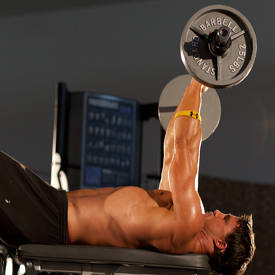
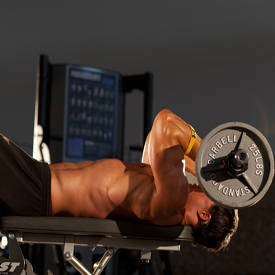
CLOSE-GRIP BARBELL BENCH PRESS
3 sets to failure, rest 60 sec
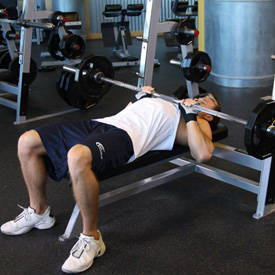

SUPERSET 2:
PREACHER CURL
3 sets of 8 reps, no rest


SEATED TRICEPS PRESS
3 sets of 8 reps, rest 60 sec


SUPERSET 3:
CABLE HAMMER CURL
3 sets of 10 reps, no rest


TRICEPS PUSH-DOWN
3 sets of 10 reps, rest 60 sec


SUPERSET 4:
ONE-ARM CABLE CURL
3 sets of 12 reps per arm, no rest


TRICEPS CABLE KICK-BACK (SHOWN WITH DUMBBELL)
3 sets of 12 reps per arm, rest 30 sec


NOTES:
- This workout excludes warm-up sets. Do as many warm-ups as you need, but never take them to muscle failure.
- Choose a weight that allows you to just reach muscle failure at the target rep. Adjust weight on follow-up sets as necessary.
- The next time you do this workout, reverse the order within each superset and start with the triceps movement.
KEY TRAINING TIPS
TRISET
These moves are your best mass builders, which is why you’ll do them first. And by loading up the weight and cutting the reps per set to 6, you’ll fail at lower reps, which will add considerable strength stimulus. Load up a barbell—or EZ bar if you prefer—and grab a flat bench.
Standing Barbell Curl: A shoulder-width grip may be the most comfortable for most people, and it’s the best for working the long (outer) head of the biceps. However, if you really want to focus your short (inner) biceps head, take a wider grip. Either way, keep these curls strict!
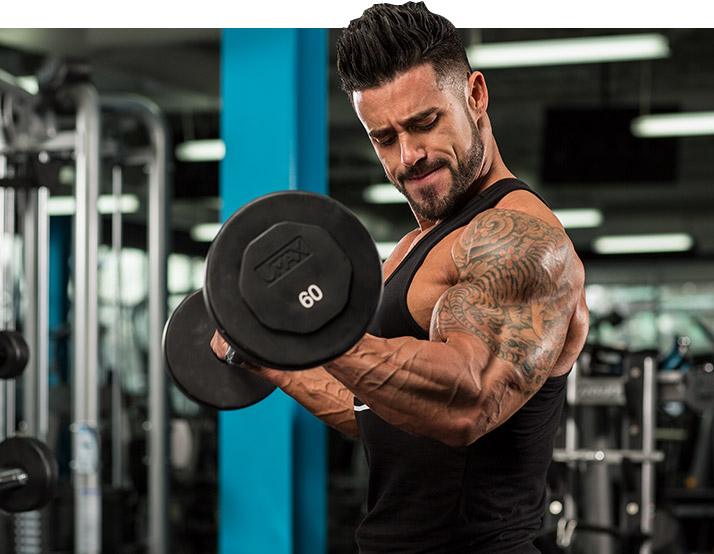
wEZ-Bar Skullcrusher: When you finish curling, lay the bar on the end of the bench. As you do the movement, try to keep your upper arms perpendicular to the floor to keep this movement focused as much as possible on the triceps. They’re not pull-overs!
Close-Grip Barbell Bench Press: Now you’ll bring in additional muscle groups and do a multijoint exercise to help out your fried triceps. Don’t stop at an artificial rep count; go to failure.
SUPERSET 1
Rather than doing your overhead triceps exercise on a low-back bench, bring a dumbbell over to the preacher bench and do it while sitting backward on the bench. Use a relatively lighter weight than you did with the initial giant set.
Preacher Curl: Because your upper arms are positioned in front of the plane of your body, you’ll find this exercise best hits the short head. Make sure to keep your arms parallel to each other on the bench. Don’t lift your elbows off the pad. Use an EZ-bar to reduce wrist stress.
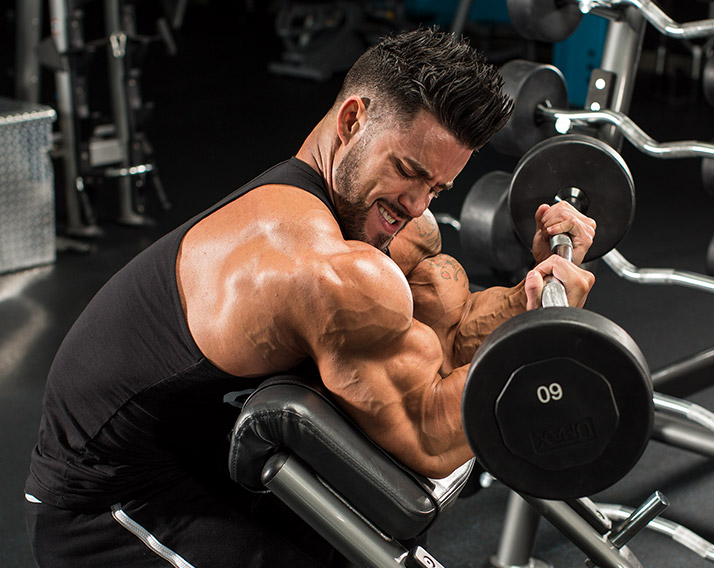
Seated Triceps Press: Arms-overhead movements are good at working the often-overlooked triceps long head. That’s why it’s always a good idea to include at least one arms-overhead movement in your triceps routine.
SUPERSET 2
You’ll attach the rope on the cable for this one, using the lower position for the biceps curl, then sliding it to the top to complete the triceps pushdown. Once again, emphasize the muscle pump by backing off the weight a bit more as you start training.
Cable Hammer Curl: Use a neutral grip on this move to really hit the brachialis and build up your upper-arm girth. This will also work the brachioradialis on top of your forearm near the elbow joint.
Triceps Push-Down: By keeping your elbows pinned to your sides and acting as unmoving hinges, you can keep the focus on the triceps’ lateral head.
SUPERSET 3
Toward the end of the workout, your focus is all about finishing off with a deep burn and muscle pump. The weights you’ll use here are the lightest yet, so challenge yourself to complete an extra rep or two.
Do both exercises unilaterally so you can fully focus on one arm at a time. This singular focus can help you improve the mind-muscle connection and give you a more profound burn. Since there’s already a rest period built in when you move from one side to the other, reduce your post-superset rest interval to just 30 seconds.
Standing One-Arm Cable Curl: Do this curl in a position that feel best for you: facing toward or away from the cable stack, or any angle in between. Use your free hand to self-spot a few extra reps if you’re up for some more of that good pain!
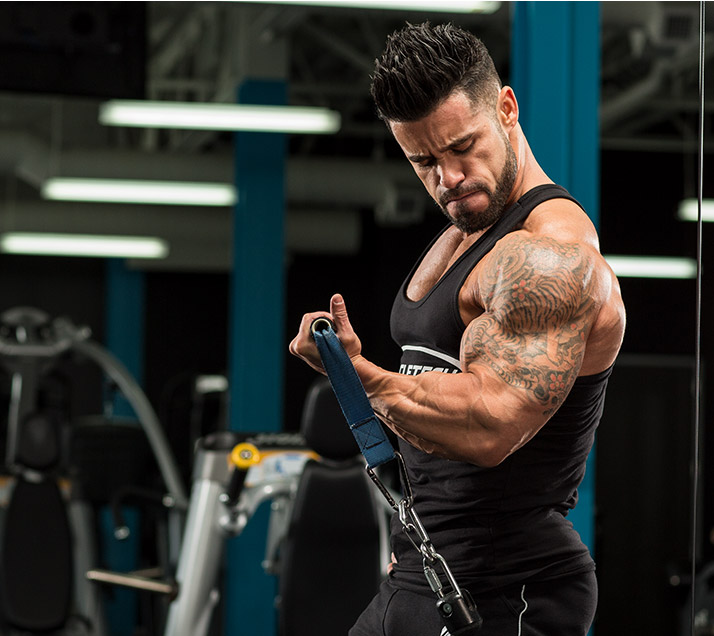
Triceps Cable Kick-back: Instead of using dumbbells, take the handle off the cable and hold on to the rubber ball. Keep your elbow still as you complete each rep. If you drop and then raise it each time, you’ve turned this solid single-joint move into a multijoint one and robbed your triceps of a good workout.
HOW TO ADJUST THE WORKOUT
The volume and intensity laid out here are probably best-suited to more advanced trainers, but feel free to adjust them to suit your ability.
- Beginning lifter: Only perform the triset and the first superset. Also, add 2 reps to each set in all exercises. So, perform 8 reps per set in the triset, and 10 in the superset. But still go heavy enough to hit failure at those numbers!
- Intermediate lifter: Drop the last superset. Don’t worry; the other ones will still give you everything you need to grow!
REFERENCES
- Grabiner, M. D. (1994). Maximum rate of force development is increased by antagonist conditioning contraction. Journal of Applied Physiology, 77(2), 807-811.
- Grabiner, M. D., & Hawthorne, D. L. (1990). Conditions of isokinetic knee flexion that enhance isokinetic knee extension. Medicine and Science in Sports and Exercise, 22(2), 235-244.





